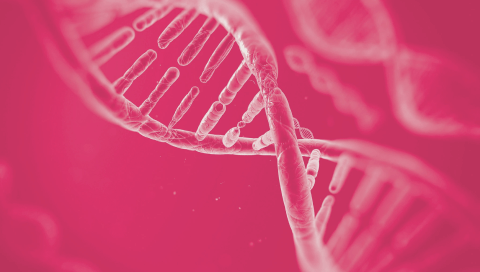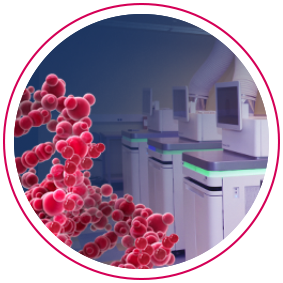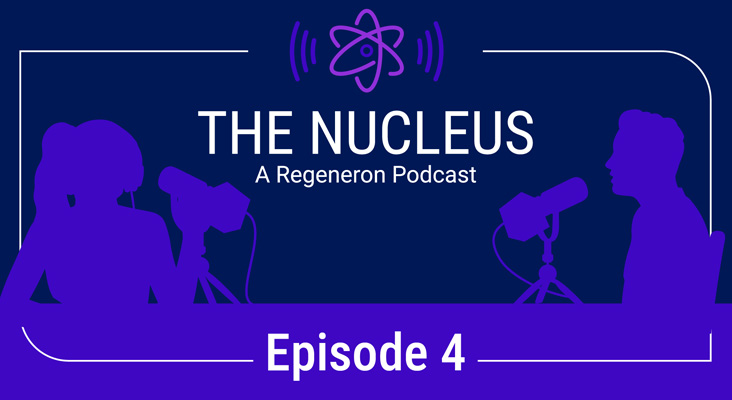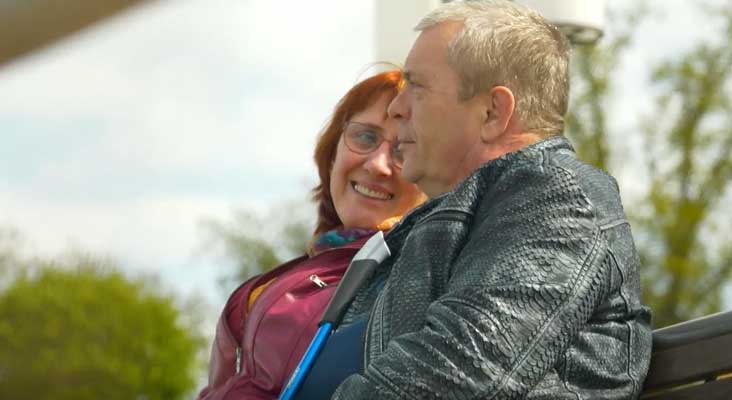Genetics
Stacking The Deck For Genetic Discovery
February 12, 2019
Powerful effects of working with founder populations
By: Alan Shuldiner, MD, Vice President, Founder and Special Populations, Regeneron Genetics Center®

While some aspects of Old Order Amish weddings may be different than your typical American wedding–for instance, the parking lot is full of horse buggies and there’s not a single cell phone or camera–at the end of the day, the celebration is the same: one of love and a growing family.
I’ve had the privilege of attending Amish weddings in Pennsylvania, an honor of friendship, trust, and mutual respect obtained through years of partnership working together on health and genetics research.
The Amish are a unique community that can teach us a lot about human biology and genetics. I like to say that they’ve “stacked the deck” for novel gene discovery primarily due to two things: They were founded by a small number of individuals who immigrated from Europe in the 1700s, and marry only within a closed community. Over the generations, genetic changes within the population may increase in frequency, making it possible for scientists to identify genetic anomalies with a much smaller sample size than would be needed from the general population. There are many founder populations like the Old Order Amish throughout the world, each with their unique genetic architecture and potential for new discoveries. Studying these populations has been the focus of my work at Regeneron. Our ultimate goal is to accelerate therapeutic discovery and development and to improve healthcare for patients and the community.
Speeding up the genetics discovery
Over the years as a faculty member at the University of Maryland School of Medicine, I’ve worked with the Amish community to build trust and increase their engagement in genetic research. My team and I identified a number of very interesting variants in genes in the Amish that have informed human biology such as APOC3, which is associated with low blood triglyceride levels and cardioprotection. This work led to the development of APOC3 inhibitors, which are now in clinical trials to treat high triglyceride levels in patients at risk for heart disease. Now, by bringing together the Regeneron Genetics Center® (RGC)–with its unsurpassed high-throughput DNA sequencing and analysis capabilities–and the Amish Research Clinic, we’ve dramatically sped up the genetic discovery process. Together, we have sequenced thousands of Amish samples and have found many connections between variation in genes and diseases or related traits.

Making a direct impact on patient care and the health of communities is our ultimate goal, whether it’s immediate or longer-term. Through this work, my team and I recently discovered a damaging variant in KCNQ1, a genetic abnormality linked to long QT syndrome, a heart rhythm disorder that can result in sudden death. While these abnormalities are very rare in the general population (approximately one in 2,500), due to genetic drift or a “founder effect,” approximately one in 40 Amish people have this genetic mutation.
Through DNA sequencing at RGC, we have identified over 100 Amish KCNQ1 variant carriers...many of whom had unexplained episodes of fainting or family members who experienced sudden death.
With this information, doctors are able to make simple patient care modifications that may save these patients’ lives. Through cascade screening, family members can also be diagnosed and treated, thus amplifying the impact of this new finding on health in families and the community.
Another output from our work with the Amish is to learn from their genetics to enhance our search for the next great medicine. We recently identified a variation in the B4GALT1 gene, which is associated with lower cholesterol levels and lower fibrinogen levels–higher levels of both are independent risk factors for heart diseases. This means that this genetic variant could help us to understand the physiology of cardiovascular risk reduction–an exciting prospect for our research efforts. Thanks to the prevalence of this gene variation in the Amish community, instead of needing many millions of DNA samples from the general population, we’ve pinpointed this variant with just a few thousand Amish samples. Our next steps are to make an animal model of this “protective” gene, and with the University of Maryland, study people with this unique gene variation further to better understand its biology.
Getting to the root of the cause for more understanding
Sometimes our work with collaborators leads to both direct patient impact and a longer-term research impact. In my role at Regeneron, I’ve had the honor of working with the Clinic for Special Children in Lancaster, Pennsylvania where they care for Amish and Mennonite children with rare genetic diseases. RGC sequences thousands of these children with undiagnosed disorders and their family members to help identify the root cause, then provides this information back to the Clinic to inform patient care. Simultaneously, we’re able to identify potential new therapeutic targets by analyzing these sequenced exomes and health data in order to speed up research for these rare disorders.
I am continually inspired by the Amish–not only for their dedication to family and community, but for their humility, altruism, and willingness to engage in research for the benefit of humankind. As a physician and scientist, I cannot think of a more satisfying career path and am forever indebted to the Amish community for this honor.
About the Regeneron Genetics Center

The Regeneron Genetics Center® (RGC) has built one of the world’s most comprehensive genetics databases, pairing the sequenced exomes and de-identified electronic health records of more than 500,000 people so far. Building upon our strengths in mouse genetics and genetics-driven drug discovery, this information will allow us to elucidate, on a large scale, genetic factors that cause or influence a range of human diseases. We believe that this knowledge can advance basic science around the world, provide clinically valuable insights to physicians and patients, and ultimately make drug development faster and more precise.
More Regeneron Stories


